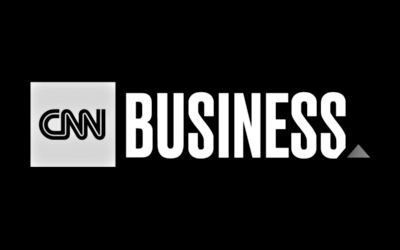Maximizing Retirement Savings in 2024
All taxpayers face IRS-determined limitations on the amount of contributions they may make towards retirement savings each year. With these contribution limits changing from one year to the next, as well as the abundance of investment options and tax issues to consider, it is crucial to review your retirement savings strategy annually. With careful planning and strategic execution, most high-income, high-net-worth individuals can set themselves up for a comfortable and secure retirement. In this post, we’ll explore some key approaches individuals should take to optimize their retirement savings in 2024.
Explore Employer-Sponsored Retirement Plans:
For high-income earners, employer-sponsored retirement plans like 401(k)s can be invaluable tools for retirement funding. Take advantage of employer matches and consider contributing the maximum allowable amount ($23,000 in 2024 with an additional $7,500 catch-up for those age 50+) to your plan. Additionally, some employers permit employees to make after-tax contributions to their 401(k)s, which may provide another avenue for high-net-worth individuals to boost retirement savings beyond traditional contribution limits.
Take Full Advantage of other Individual Retirement Accounts (IRAs):
In addition to employer-sponsored plans, consider your eligibility to contribute funds to either a traditional Individual Retirement Account (IRA) or a Roth IRA. You can contribute to either or both types of accounts so long as your combined contributions don’t go beyond your earned income, or the IRS permitted allowances. For 2024, the maximum combined amount you may contribute across all IRAs is $7,000 for individuals under age 50 ($8,000 for those age 50 or older).
Keep in mind that there are income limitations imposed by the IRS that may affect your ability to make pre-tax contributions to a traditional IRA or any direct contributions to a Roth IRA. Post-tax contributions to a Roth IRA, while not often a priority for high-income earners, may be worth considering as they can provide tax-free withdrawals during retirement and allow for additional tax-efficiency later in life. For high-earners who are phased out of deductible IRA contributions or direct Roth IRA contributions, utilizing specific strategies such as a backdoor Roth IRA may be worth analyzing. Converting pre-tax IRA money into a Roth IRA might be beneficial in years when income is low (like the period between retirement and reaching Required Minimum Distribution age). Working with knowledgeable advisors on these tactics is necessary to ensure compliance with IRS regulations.
Implement Tax-Efficient Investment Strategies in Taxable Accounts:
As mentioned earlier, tax efficiency is crucial for maximizing returns and minimizing tax liabilities, especially for high-income individuals subject to higher tax brackets. Consider utilizing tax-efficient investment vehicles such as index funds, exchange-traded funds (ETFs), and municipal bonds in any taxable accounts. Strategic tax-loss harvesting, and asset location strategies can also help optimize after-tax returns within taxable investment accounts.
Diversify Investments across Asset Classes:
Diversification continues to be key in managing risk and optimizing returns in any investment portfolio. High-net-worth individuals should consider diversifying their retirement savings across a range of asset classes, including equities, fixed income, real estate, and alternative investments such as private equity and hedge funds. Work with your advisor to develop a customized asset allocation strategy tailored to your risk tolerance, retirement objectives, and time horizon.
Don’t Forget about Health Savings Accounts (HSA):
Since health care costs continue to rise and can be a significant expense for some individuals in retirement, it is also important to save for these costs too. If enrolled in an HSA-eligible health plan, consider contributing to an HSA up to the maximum amounts permitted ($4,150 for an individual and $8,300 for families in 2024 plus a catch-up contribution of $1,000 for HSA holders aged 55 and over). Contributions into an HSA are made on a pre-tax basis and can generate tax-deferred (or tax-free) earnings. Withdrawals made to cover qualified medical expenses are made tax-free as well. Funds not used in any given year may continue to be invested until they are needed in the future.
Regardless of your level of wealth, it’s important to understand your sources of income and expected spending in retirement years and create a flexible plan to optimize your situation. By leveraging tax-advantaged accounts, exploring employer-sponsored retirement plans, diversifying investments, and implementing tax-efficient strategies, individuals can position themselves for a financially secure and fulfilling retirement. Understanding the contribution and income limitations for each plan will go a long way in helping you maximize your savings in any given year.
| Employer-Sponsored Plan Limits | 2024 |
| 401(k), 403(b) employee contributions | $23,000 |
| Catch-up contribution | $7,500 |
| Total contribution (under age 50) | $69,000 |
| Total contribution (age 50+) | $76,500 |
| Other Retirement Plan Limits | |
| Traditional or Roth IRA contribution | $7,000 |
| IRA catch-up contribution | $1,000 |
| SEP-IRA contribution | $68,000 |
| HSA contribution (single/family) | $4,150/$8,300 |
| Roth IRA Income Phase-Outs | |
| Single | $146,000-$161,000 |
| MFJ | $230,000-$240,000 |
| MFS | $0-$10,000 |
The key to successful retirement planning is not just about accumulating sufficient wealth but also effectively managing and preserving it for the long term. Consult with your advisor to develop a comprehensive retirement plan tailored to your unique financial situation and goals.










